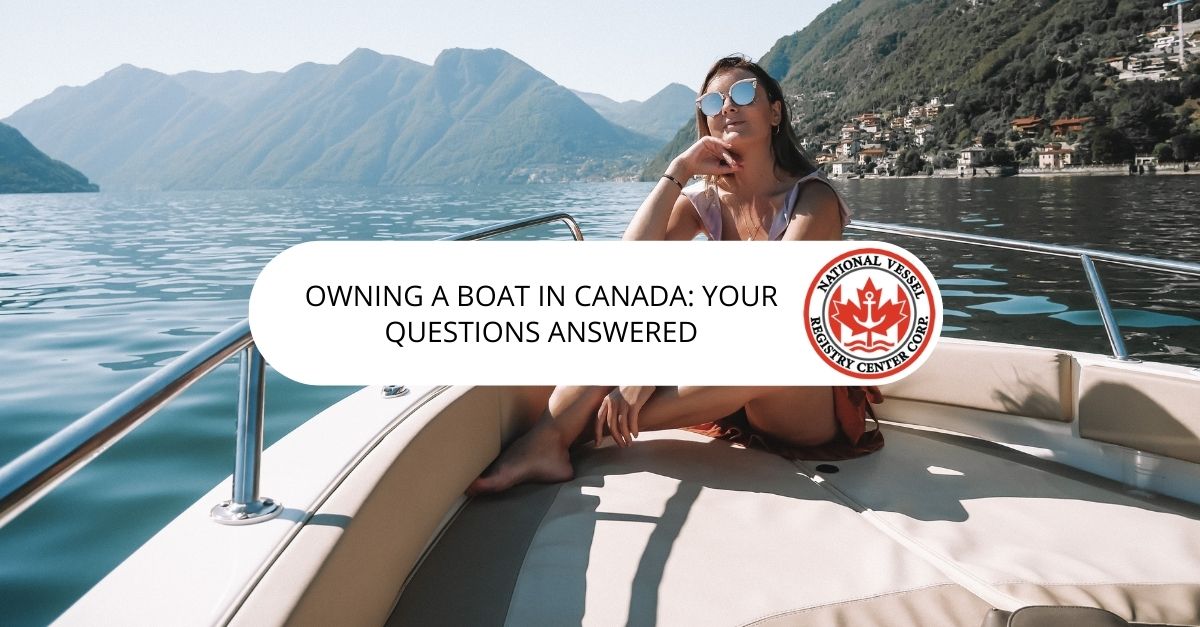You can only demonstrate ownership of your Canadian vessel with a copy of a bill of sale. Do not confuse ownership with licensing or registration. A registration or license cannot be used to replace actual ownership of a pleasure vessel.
Owning a Boat in Canada and Licensing
Owning a boat in Canada involves keeping a copy of your bill of sale onboard at all times. You should also show that your Canadian vessel is properly licensed or registered.
With respect to licensing, you will use the license or its number, which is featured on the boat’s side, to identify your vessel for search and rescue (SAR), or to locate your vessel in case of theft.
The number can be compared to a license that is visible on a vehicle. A pleasure craft license is good for ten years. Make sure the number is at least 7.5 centimeters (3 inches) tall and that the color contrasts with the boat’s bow.
A pleasure craft operator card (PCOC) is the best way to demonstrate your boating proficiency. You must possess this endorsement if you are the boat’s operator. You can take the test and obtain the card online through a Transport Canada training site.
Licensing and Registration Requirements
Again, you should keep a copy of the boat’s bill of sale with you onboard. You need a bill of sale to submit an application for a license or registration. You have 90 days from the sale date to obtain a license or registration.
Along with the bill of sale, you’ll need to submit a copy of your government-issued photo I.D. If you’re purchasing a secondhand boat, you’ll need the license number displayed on the boat for licensing and transfer purposes.
Buying and Owning a New Boat
If your boat is brand new, the license transfer is handled by the boat dealer. Again, they’ll require a copy of your government-issued photo ID. They’ll also need a signed declaration from a third party confirming the dealer’s authority to license the boat.
Boat licensing procedures vary from province to province. A $250 punishment may be imposed by authorities if you operate your boat without a license. So, in addition to your boat’s bill of sale (which demonstrates your ownership of the vessel), you also need to prove you’re fully licensed and have physical proof of the license
The Bill of Sale and Registration
The bill of sale is used to establish ownership because it supports several important details with respect to registration. The following specifics are contained in this information:
- The hull identification number (HIN)
- The registry’s name and port number (for named boats that are larger in size)
- Name(s), addresses, and signature(s) of the purchaser(s)
- The seller’s name(s), address(es), and signature(s)
What is the Hull ID Number (HIN)?
The HIN stands for a unique 12-digit number assigned to a pleasure craft that is manufactured, constructed, or rebuilt with the intention of being marketed or operated in Canada. The HIN must be positioned so that it is visible while the boat is in motion.
The right (starboard) side of the transom, or the boat’s vertical back part, is where boaters are instructed to display the HIN. If the boat lacks a transom, boaters should mark the number on the starboard side on the rear of the hull.
Seller Transactions: Changing the Owner’s Name and Address
Sellers of recreational boats are required to notify Transport Canada of a name and address change. As a boat seller, you must sign the back of your vessel license and provide it to the buyer. The buyer, or new owner, must then fill out and sign the license’s opposite side before completing the transaction.
The Boat Ownership Transfer Deadline
Again, this transfer must occur within 90 days. The owner of the boat can operate the vessel as long as the name and address change is present onboard the ship. Maintain the accuracy of your owner information at all times. If you plan to navigate a boat in Canada, you need to make this a priority.
Registering Your Canadian Vessel
A license is required by Canadian small vessel laws for boats with motors of 10 horsepower or higher. Therefore, registration is voluntary while licensure is required for boats that have a motor of 10 hp or higher.
However, you won’t receive the license number if you register your boat and give it a name. Instead, you will receive a HIN (hull identification number) to display. You’ll also include the boat’s name and its home port of registry on the vessel.
You either can choose to license your boat or register it. You can’t license it and register it at the same time
If you register the boat, the name should be distinctive since words that sound alike or similar phonetically can make it difficult to find a boat in an emergency.
Advisors in the legal and financial fields encourage boat owners to register their boats since it provides the boat owner with further evidence of their ownership. If you have this kind of backup, you can also obtain a marine loan-based mortgage.
Every three years, Transport Canada sends a request for information to validate ownership and registration. You must confirm your address and that you are still the boat’s owner to verify your status and enjoy the benefits of registration.
Final Thoughts About Owning a Boat in Canada
While licensing, a boat operation card (PCOC), or vessel registration Canada tie into owning a recreational boat, they cannot be substituted as proof that you’re a boat’s owner. This criterion is only satisfied by your bill of sale.
Register or License Your Boat Through the Canadian Vessel Registry
If you own a boat, make sure you license or register it as soon as possible. You can make the process a breeze by applying for a license or registration through the Canadian Vessel Registry.


